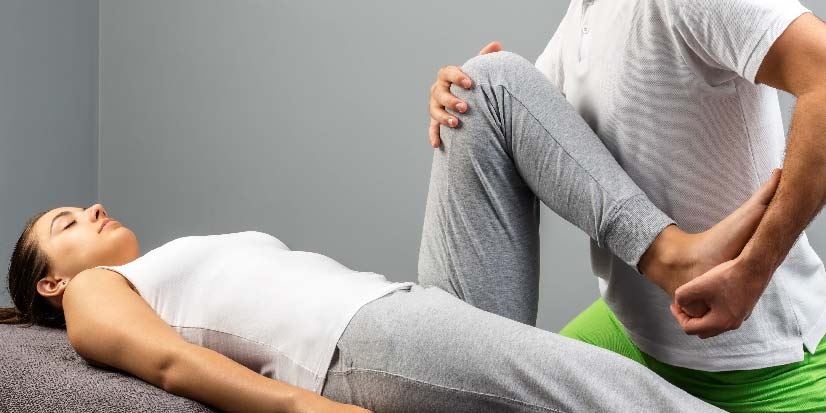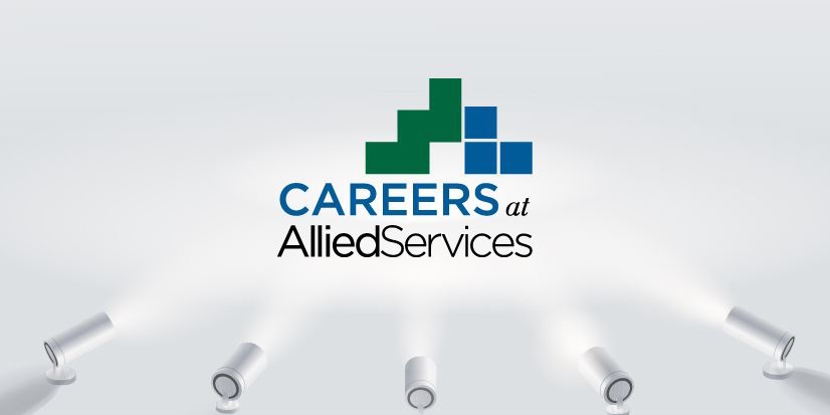Pain, Osteoarthritis, and Physical Therapy
- Category: Physical Therapy
- Posted On:
- Written By: Allied Services Integrated Health

The CDC estimates that 1 in 4 (or 54.4 million) US adults have some form of arthritis, a figure that is projected to reach 78 million by the year 2040. While there are estimated to be more than 100 types of arthritis, osteoarthritis (OA) is the most common form of arthritis, affecting 32.5 million US adults.
What is Osteoarthritis?
Osteoarthritis (OA) is the most common form of arthritis. Some people call it degenerative joint disease or “wear and tear” arthritis. It occurs most frequently in the hands, hips, and knees. With OA, the cartilage within a joint begins to break down and the underlying bone begins to change.
What Causes Osteoarthritis?
The exact cause is not known, but several things are thought to increase your risk of developing osteoarthritis, including age, joint injury, overuse, obesity, musculoskeletal abnormalities, and even gender.
Your risk of developing the condition increases as you get older. Overusing your joint when it has not had enough time to heal after an injury or operation. A bone fracture or cartilage or ligament tear can lead to OA, sometimes more quickly than in cases where there is not an obvious injury.Excess weight adds stress and pressure on a joint, plus fats cells promote inflammation, and malalignment of bone or joint structures can contribute to faster development of OA.
Symptoms of Osteoarthritis
The main symptoms of osteoarthritis are joint pain and stiffness, and problems moving the joint. Some people also have symptoms such as:
- Pain. Affected joints might hurt during or after movement.
- Stiffness. Joint stiffness might be most noticeable upon awakening or after being inactive.
- Tenderness. Your joint might feel tender when you apply light pressure to or near it.
- Loss of flexibility. You might not be able to move your joint through its full range of motion.
- Grating sensation. You might feel a grating sensation when you use the joint, and you might hear popping or crackling.
- Bone spurs. These extra bits of bone, which feel like hard lumps, can form around the affected joint.
- Swelling. This might be caused by soft tissue inflammation around the joint.
The severity of osteoarthritis symptoms can vary greatly from person to person, and between different affected joints. Almost any joint can be affected by osteoarthritis, but the condition most often causes problems in the knees, hips and small joints of the hands.

![]()
Treatment Options for Osteoarthritis
Osteoarthritis can't be reversed, but treatments can reduce pain and help you move better. Mild symptoms can sometimes be managed with simple measures, including regular exercise, losing weight if you're overweight, wearing suitable footwear and using special devices to reduce the strain on your joints during your everyday activities.
If your symptoms are more severe, you may need additional treatments such as painkillers, physical therapy, or in the worst case, surgery.
Avoid Unnecessary Surgery With Physical Therapy
Physical therapists are experts at using movement, positioning, and other methods to help reduce pain and avoid the use of medications, including opioids.
Physical therapy has been proven to successfully manage OA. Seeing a physical therapist early can help slow the progression of the condition, or even prevent it from becoming worse. Proper treatment also can help people delay or avoid surgery. Our goals for osteoarthritis patients typically include:
- Improving the mobility and restoring the use of affected joints,
- Increasing strength to support the joints,
- Maintaining fitness,
- Preserving the ability to perform daily activities.
The two main types of physical therapy—passive and active treatments—can help make your OA more manageable. With passive treatments, the physical therapist does the majority of the work. But with active treatments, you do more of the work, such as at-home exercises.
Physical therapists:
- Teach you proper posture and body mechanics for common daily activities to relieve pain and improve function.
- Show you how to properly use assistive devices such as walkers and canes.
- Recommend different treatment options, such as braces and splints to support joints, shoe inserts to relieve stress on the lower extremities, and hot and cold therapy to ease joint pain and stiffness.
- Suggest modifications to your environment, such as ergonomic chairs or a cushioned mat in your kitchen, to relieve pain and improve function.
Physical therapy may include:
- Range-of-motion exercises
- Muscle strengthening
- Manual therapy
- Bracing to reduce pain and swelling
- Activity recommendations
- Other treatments such as ice and heat for pain management
Request an Appointment
To find relief from pain, explore therapy options or find a osteoarthritis expert in Northeast Pennsylvania, fill out the quick form below. Our friendly team will contact you and help you get started.



